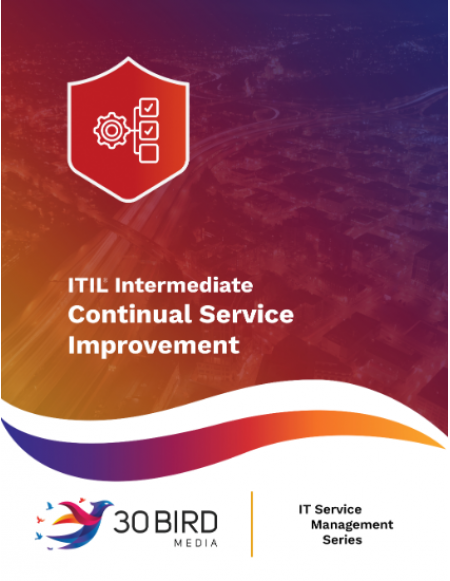Chapter 1: Introduction to Continua Service Improvement
The purpose, objectives and scope of CSI
The value to the business of adopting and implementing CSI
The context of CSI in the ITIL service lifecycle
The approach to CSI, including key interfaces and inputs and outputs
Chapter 2: Continual Service Improvement Principles
How the success of CSI depends on understanding change in the organization and having clear accountability
How service level management and knowledge management influence and support CSI
How the complete Deming Cycle works, and how it can be applied to a real world example
How CSI can make effective use of the various aspects of service measurement
What situations require the use of frameworks and models, and examples of how each type can be used to achieve improvement
Chapter 3: Continual Service Improvement Processes
What the seven-step improvement process is, how each step can be applied and the benefits produced
How CSI integrates with the other stages in the ITIL service lifecycle
How other processes play key roles in the seven-step improvement process
Chapter 4: Continual Service Improvement Methods and Techniques
When to use assessments, what to assess & how a gap analysis can provide insight into the areas that have room for improvement
How to use benchmarking, service measurement, metrics, service reporting, including balanced scorecard and SWOT, to support CSI
How to create a return on investment, establish a business case and measure the benefits achieved
How techniques within availability management, capacity management, IT service continuity management and problem management can be used by CSI
Chapter 5: Organizing for Continual Service Improvement
The role of the CSI manager, and the roles of service owner, process owner, process manager and process practitioner in the context of CSI
How these roles can be positioned within an organization
How to design, implement and populate a RACI (responsible, accountable, consulted, informed) diagram as well as how to use it to support CSI
Chapter 6: Technology Considerations
The technology and tools required
How these tools would be implemented & managed to support CSI activities such as: Performance, Project & portfolio management, Service measurement & Business intelligence reporting
Chapter 7: Implementing Continual Service Improvement
CSI implementation: strategy, planning, governance, communication, project management, operation, and how to deal with cultural and organizational change
Chapter 8: Challenges, Critical Success Factors and Risks
The challenges and risks related to CSI and how these challenges can be addressed
The critical success factors related to CSI as well as how to measure and monitor them
ITIL Continual Service Improvement provides guidance for the identification of improvement opportunities in all aspects of the service lifecycle. ITIL Continual Service Improvement also looks at the changing business outcome requirements and suggests how these requirements can be met by the delivery of ever increasing quality IT services.
To request the PowerPoints for this course, please e-mail sales@30bird.com.

